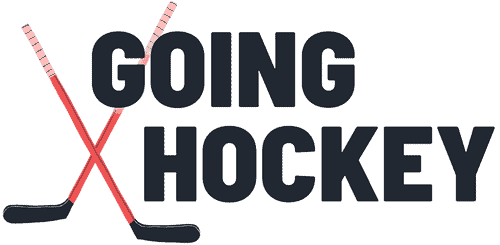Amidst the fervor of the hockey arena, the question of what position commands the greatest goal-scoring prowess comes to the forefront, prompting an insightful investigation into the sport’s most prolific scoring role.
What position scores the most in hockey?
In hockey, forwards tend to be the positions that score the most goals, with centers, wingers, and particularly top-line players carrying the primary responsibility for putting the puck in the net.
Table of Contents
ToggleWhat Position Scores The Most In Hockey?
In hockey, the distribution of goal-scoring responsibilities among different positions follows a clear pattern Generally, forwards are the primary contributors when it comes to scoring goals.
Within the category of forwards, there are two main types: centers and wingers. Centers play a pivotal role as playmakers, often setting up scoring opportunities through precise passes and strategic positioning.
Wingers, on the other hand, are meant to have a more direct role in scoring goals. They are often positioned closer to the opponent’s net, ready to receive passes and take shots. Top-line wingers, in particular, have a significant impact on goal-scoring due to their skill, speed, and ability to capitalize on scoring chances.
Although forwards as a whole contribute significantly to a team’s goal-scoring efforts, it’s worth noting that not all forwards are created equal in this regard.
The first line, consisting of the most skilled and offensive-minded players, tends to generate the highest number of goals. These players possess the combination of skill, hockey IQ, and creativity that allows them to outmaneuver defenders and beat goaltenders consistently.
While forwards dominate the goal-scoring statistics, other positions also play a crucial role. Defensemen, for instance, contribute to scoring through their ability to take accurate shots from the blue line during power plays or even join the rush in offensive situations.
Additionally, goaltenders have been known to score on rare occasions when the opposing team pulls their goalie for an extra attacker, and the goaltender makes a long-distance shot into the empty net.
Overall, while forwards, particularly centers and wingers, score the most goals in hockey due to their positioning, skill sets, and offensive responsibilities, the sport’s dynamic nature ensures that goal-scoring contributions can come from various positions, each adding a unique element to the intricate tapestry of the game.
Do Centers Score A Lot In Hockey?
Centers score a significant number of goals in hockey, although their primary role often revolves around playmaking and setting up scoring opportunities for their teammates.
Centers are like the “quarterbacks” of the team, responsible for controlling the flow of the game, winning faceoffs, and distributing the puck effectively. While they may not always lead in goal-scoring, they often contribute substantially to their team’s offensive efforts through assists and by creating scoring chances.
The goal-scoring output of centers can vary depending on factors such as their individual playing style, the team’s overall strategy, and the linemates they are paired with. Some centers have a more offensive mindset and actively seek opportunities to score, while others prioritize facilitating plays and setting up their teammates.
Top-tier centers often excel in both scoring goals and setting up others. They have the skill to finish scoring chances themselves while also possessing the vision and creativity to create opportunities for their linemates.
As a result, these elite centers frequently rank among the team’s leading scorers and play a crucial role in driving their team’s offensive success.
In summary, while centers are not always the highest goal-scorers on a team due to their playmaking responsibilities, they still play a significant role in scoring and contribute to their team’s offensive performance through their ability to create and capitalize on opportunities.
Where Are The Most Goals Scored From In Hockey?
In the intricate landscape of hockey’s goal-scoring dynamics, specific areas on the ice have emerged as focal points for achieving the ultimate objective: putting the puck in the net.
These strategic zones are strategically positioned to exploit the vulnerabilities in goaltender positioning and maximize the chances of scoring.
- Slot Area
- Situated between the two faceoff circles, the slot area stands as a critical zone for goal-scoring opportunities. Players stationed here have a prime angle for releasing shots toward the net. The proximity to the goaltender, coupled with the strategic vantage point, allows for accurate shots, deflections, and quick reactions that often lead to goals.
- Crease Area
- Positioned directly in front of the net, the crease area is hockey’s ultimate scoring doorstep. Close-range goals, tip-ins, and rebounds are frequently executed within this tight space. Players jostle with defenders for prime positioning, capitalizing on deflections and loose pucks that are challenging for goaltenders to control effectively.
- The Point
- Beyond the immediate offensive areas, the point – located at the outer edge of the offensive zone – plays a pivotal role in goal-scoring setups. Defensemen positioned at the point unleash shots that can be deflected or cause rebounds in front of the net, often leading to scoring opportunities.
- Half-Wall Area
- An additional vital dimension in the goal-scoring narrative is the half-wall area. Especially potent in powerplay situations, this section along the boards adjacent to the faceoff circle serves as a haven for one-timers. Players adept at capitalizing on quick, accurate passes from teammates use this location to exploit gaps in the defensive setup and fire potent shots towards the net.
The pursuit of these scoring areas underscores the strategic interplay between offensive creativity and defensive resilience. Teams orchestrate quick puck movement, precise passes, and strategic positioning to create and exploit chances within these zones.
As the battle for territorial control and offensive dominance unfolds, these areas remain the epicenter of action where hockey’s electrifying drama is punctuated by the exhilaration of a well-placed shot finding the back of the net.
What Is The Best Way To Score More?
Increasing goal-scoring in hockey is a multifaceted endeavor that requires a combination of individual skills, team strategies, and tactical awareness. Two principles that can significantly contribute to scoring more are to:
- Shoot More
- The old adage “you miss 100% of the shots you don’t take” holds true here. Players looking to increase their goal-scoring should prioritize shooting whenever they have a clear opportunity.
- Shooting more frequently not only increases the chances of scoring directly but also generates rebounds and deflections that can lead to additional scoring opportunities. A mindset of taking shots when in good shooting positions, even if the shot might be blocked or deflected, can create chaos for the opposing goaltender and defenders.
- The old adage “you miss 100% of the shots you don’t take” holds true here. Players looking to increase their goal-scoring should prioritize shooting whenever they have a clear opportunity.
- Get Open
- One of the most effective ways to score more in hockey is to create space and position yourself effectively to receive passes. Players who can read the game well and anticipate the movement of the puck can “get open” by finding gaps in the defense and positioning themselves in high-danger areas such as the slot, crease, or between the faceoff circles.
- This involves using quick changes of direction, utilizing body positioning to shield defenders, and exploiting defensive lapses to create opportunities for shots or deflections.
- One of the most effective ways to score more in hockey is to create space and position yourself effectively to receive passes. Players who can read the game well and anticipate the movement of the puck can “get open” by finding gaps in the defense and positioning themselves in high-danger areas such as the slot, crease, or between the faceoff circles.
Incorporating these strategies into your gameplay requires a combination of individual practice and team collaboration.
Developing accurate shots, quick releases, and a keen sense of positioning during practice sessions can enhance your ability to score. Additionally, communicating with teammates to establish chemistry and understanding on the ice can lead to better passing and shooting opportunities.
Remember that scoring more goals isn’t always an individual effort; it’s about creating synergistic gameplay that involves the entire team.
By focusing on getting open, positioning yourself strategically, and taking advantage of shooting opportunities, you contribute not only to your own success but also to your team’s overall offensive effectiveness.


Leave a Reply